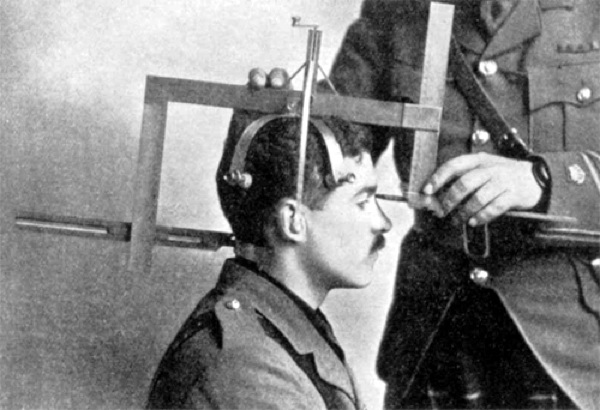
Anthropometric device invented in 1914
In 2003, a man in Miami, Florida was asked why he committed robberies. "I am too ugly to get a job," he said. That's the opening to a 2005 scientific paper in the Review of Economics and Statistics. In the paper, the researchers look at the statistics of appearance and crime. "We find that unattractive individuals commit more crime in comparison to average-looking ones, and beautiful individuals commit less crime in comparison to those who are average-looking," write the authors who are both associated with the National Bureau of Economic Research. Are "ugly" people really more likely to become criminals? Well, it's much more subtle than that. Fortean Times puts the study in context: It is intuitively obvious - though not necessarily true - that personality is reflected in someone's face. The ancient Greeks formalised their beliefs, such as close-set eyes indicating that someone is untrustworthy, into the 'science' of physiognomy. Predictably, this was abused; in Socrates's trial, his facial features were cited as evidence of his brutal nature. Physiognomy remained on a par with palmistry and the like until the 17th century, when learned men including Sir Thomas Browne attempted a more rigorous approach by completely cataloguing all possible facial conformations. Physiognomy classifies each facial element and links it to a personality trait. Curved eyebrows mean someone is friendly by nature; angled eyebrows signify someone who is always seeking to control. Everything means something.
By the 19th century, this technique was being used to fight crime. An Italian professor, Cesare Lombroso, wrote his definitive book L'Uomo Delinquente or "Criminal Man" in 1876. This was supposedly based on a statistical study of the features of convicts compared to those of (presumably honest) soldiers. Lombroso claimed that certain features indicated particular types of criminal. Murderers have prominent jaws, and pickpockets have scanty beards (unless they shave?). A one-sided grin marks brutality, whereas poisoners have "a fawning smile". Lombroso's technique was widely used in Europe until the 1930s. Prosecuting lawyers could claim that a flattened nose was a scientifically proven sign of a thief, thus strengthening their case.

No comments:
Post a Comment